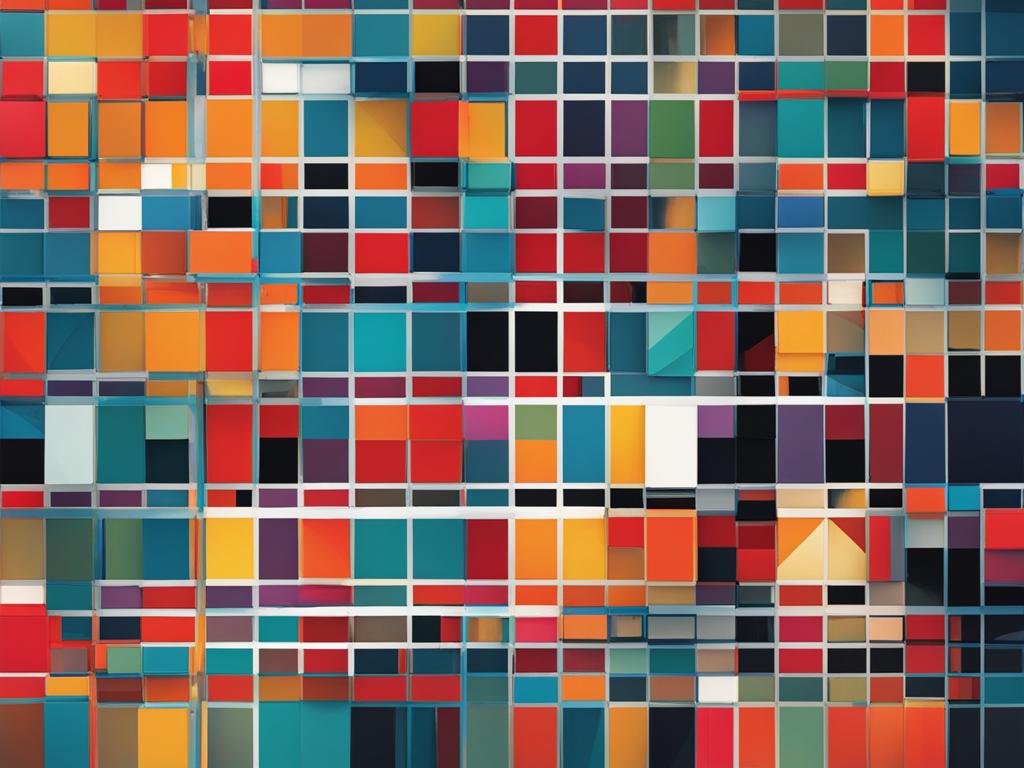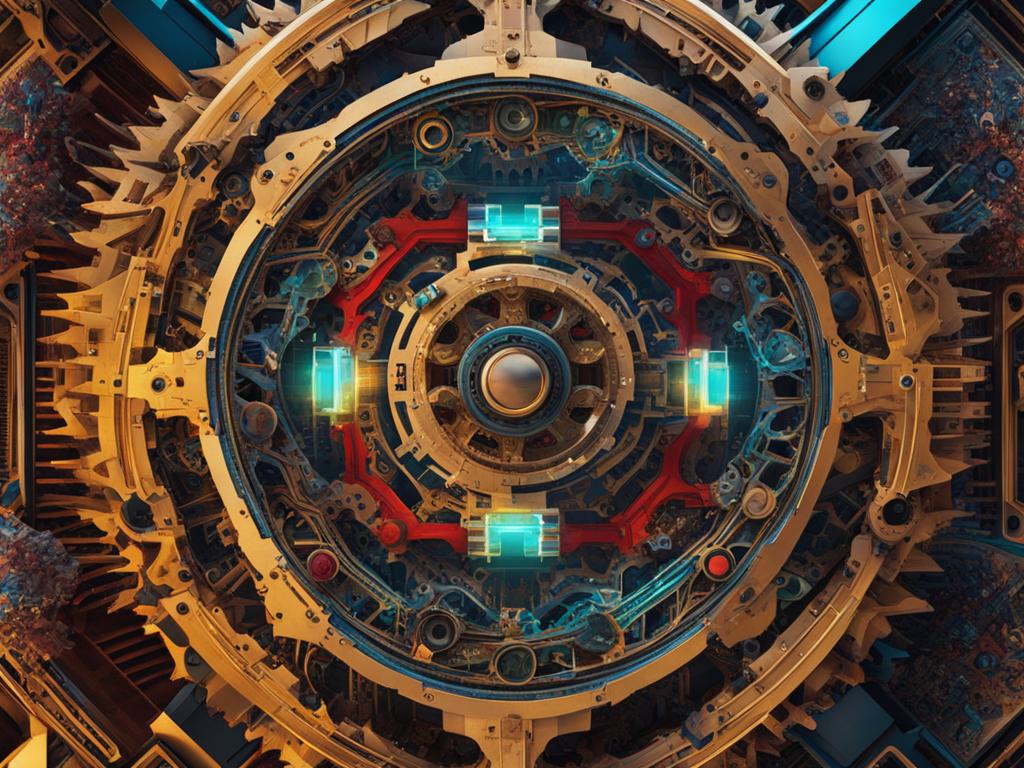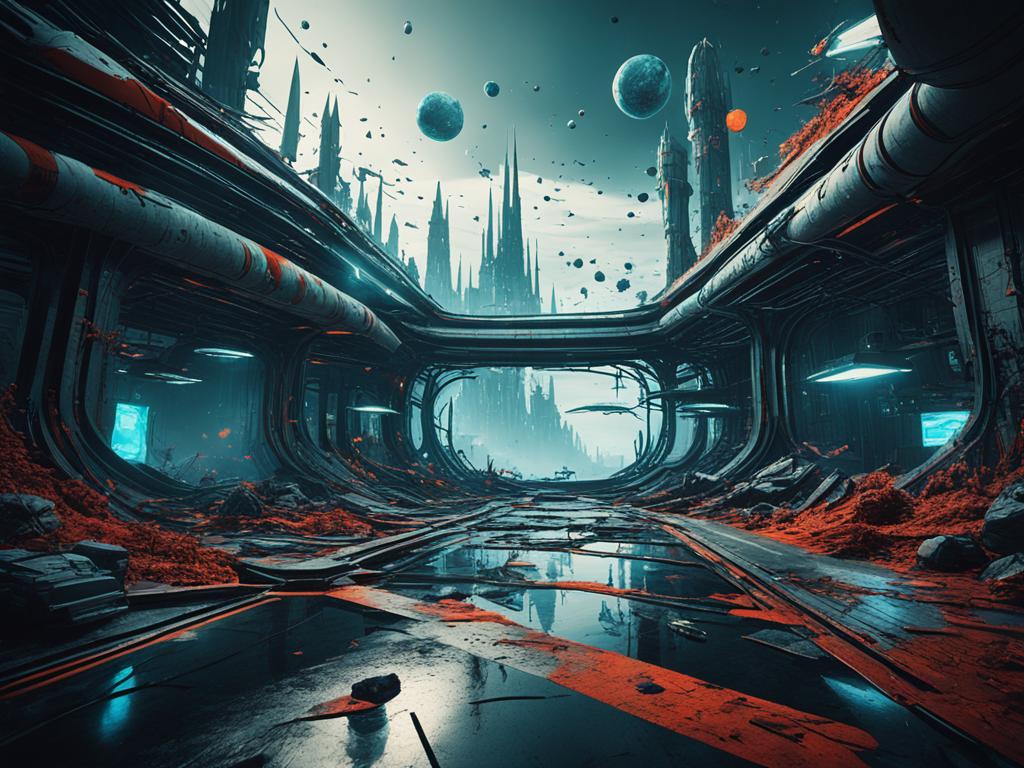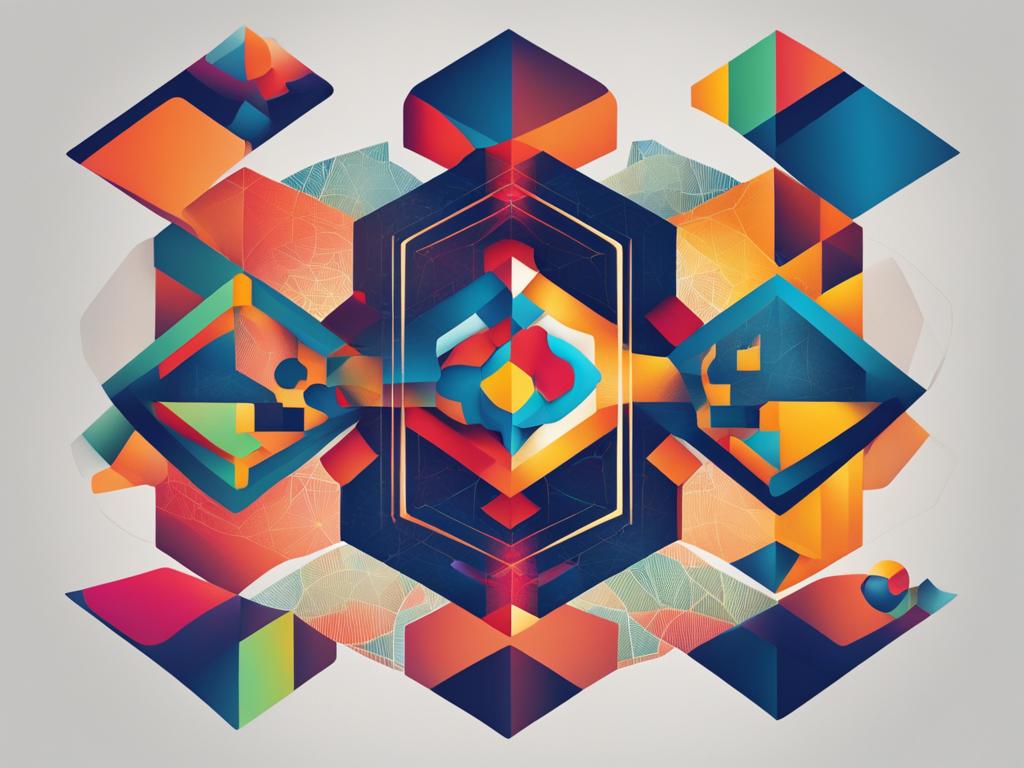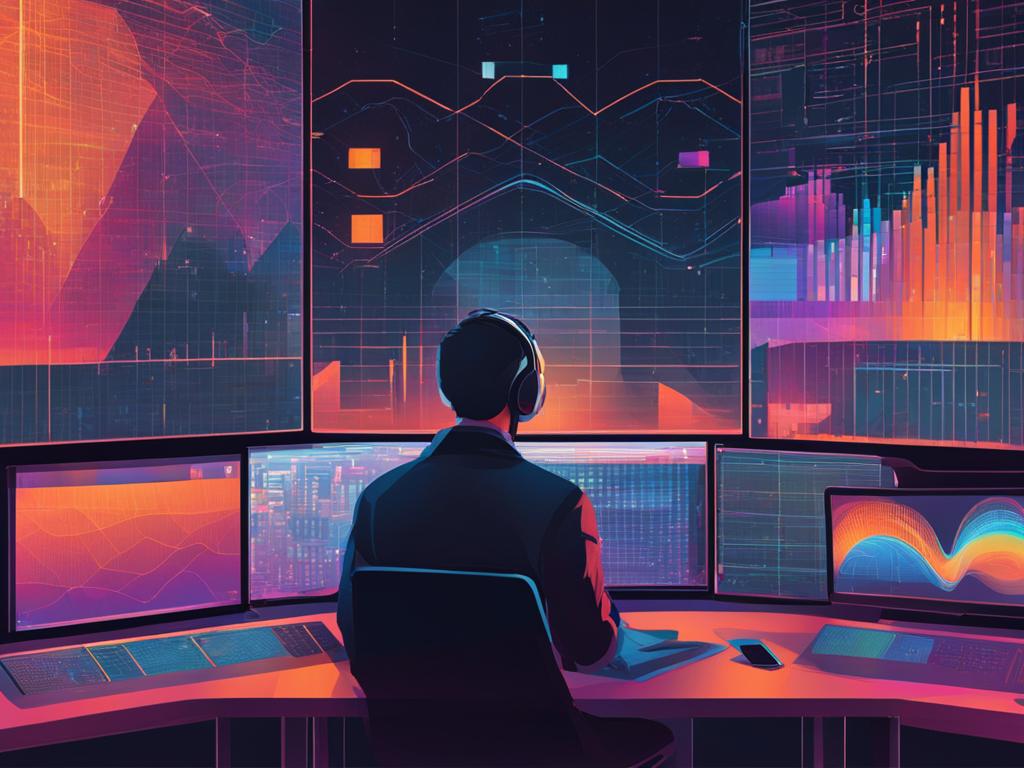As technology continues to redefine artistic expression, machine learning art painting has emerged as a dynamic field at the intersection of technology and creativity. AI painting algorithms and neural network art generation provide artists with a new set of tools for exploring color, composition, style, and more. The possibilities for artistic creation are expanding exponentially with machine learning techniques. My article explores the impact of these developments on the art world, the techniques involved, and future possibilities.
In this article, I investigate the creative process behind machine learning art painting. I examine the inner workings of AI algorithms and the various machine learning techniques artists use to refine their craft. I explore the impact of machine learning art on the art world, highlighting the most prominent artists and techniques in the field. I also discuss the implications and debates surrounding this emerging field and look to the future of this transformative development.
Join me as we delve deeper into the topic of machine learning art painting, exploring the limitless possibilities of technology and creativity.
The Impact of Machine Learning Art on the Art World
Machine learning art painting has had a significant impact on the art world, opening up new opportunities for artistic expression and challenging traditional artistic norms. With the development of AI-assisted art painting techniques, artists have expanded their creative possibilities, exploring new styles and themes.
The use of machine learning in art creation has also sparked debate within the art community. Some argue that relying on AI diminishes the role of the artist, while others see it as a tool for enhancing their artistic process. Nonetheless, the reception of machine learning art has been largely positive, with exhibitions and galleries displaying AI-generated artwork.
Machine learning art has also attracted attention from collectors and buyers. In 2018, the AI-generated artwork “Portrait of Edmond de Belamy” sold for a record $432,500 at Christie’s, indicating a growing market for AI art. As machine learning continues to evolve and technology becomes more advanced, the impact of machine learning art on the art world is only set to increase.
“Machine learning has opened up a new context for artists to play with and explore. Today we are still discovering the immense possibilities of this creative field, but it is certain that with machine learning art, we have entered a new level of artistic experience.”
Understanding AI Painting Algorithms
In the world of machine learning art painting, AI painting algorithms play a crucial role in the creative process. These algorithms utilize machine learning techniques to analyze and interpret various artistic elements such as styles, colors, and compositions, and then use this information to generate unique artwork. By understanding the mechanisms that drive these algorithms, artists can leverage them to enhance their artistic expression.
One of the machine learning techniques used by AI painting algorithms is known as convolutional neural networks. These networks analyze visual data by breaking them down into smaller, more manageable components, such as individual pixels. This process helps the algorithms to identify patterns and relationships within the data, which they can then use to create new artwork.
Another technique utilized by AI painting algorithms is known as style transfer. This method involves using a convolutional neural network to analyze two images: a content image and a style image. The algorithm then applies the style of the second image to the first image, which results in a new artwork that combines the content of one image with the style of another.
A third technique employed by AI painting algorithms is generative adversarial networks (GANs). GANs are composed of two neural networks: a generator and a discriminator. The generator creates images, while the discriminator evaluates them and provides feedback to the generator. Over time, the generator learns to produce images that the discriminator cannot distinguish from real images, resulting in increasingly sophisticated and realistic artwork.
AI painting algorithms are constantly evolving and improving, enabling artists to explore and experiment with new and exciting forms of artistic expression. By leveraging these techniques, artists can expand the boundaries of traditional art, creating innovative and thought-provoking works that push the limits of human imagination.
Neural Network Art Generation
Neural network art generation involves training a machine learning algorithm to replicate particular artistic styles and generate unique pieces of art. Through this technique, artists can create works that mimic the visual language of other artists or have characteristics of a particular art movement. Neural networks analyze and interpret specific features of artistic styles such as composition, color palettes, and brushstrokes, then use this data to create new digital works of art.
Many artists have embraced this technique and use it to create impressive works of art that challenge conventional definitions of creativity. For example, Robbie Barrat, a young artist from West Virginia, creates abstract compositions using neural networks and has exhibited his work around the world. Another notable artist, Anna Ridler, creates intricate digital art that explores themes of memory and perception through the use of machine learning algorithms.
Machine Learning for Artists
As machine learning continues to redefine the world of art, the opportunities for artists to utilize this technology in their craft become increasingly abundant. Machine learning algorithms can help artists in several ways, from sparking new creative ideas to improving their craftsmanship.
One way machine learning can help artists is by generating new ideas. Creative blocks are common, and sometimes it can be hard to find new inspiration. Machine learning algorithms can analyze vast amounts of data and create unique patterns that artists can use to generate new ideas. These algorithms can also analyze existing artwork and help artists refine their work by identifying areas that need improvement.
Another way artists can use machine learning is to automate certain aspects of the creative process, such as color selection. By using machine learning to handle technical aspects of the art creation process, artists can focus on the more creative aspects of their work. Neural networks, in particular, can aid artists in creating complex compositions while still maintaining the artist’s intended style.
However, relying on AI in the art creation process raises ethical considerations and potential challenges. At what point does the role of the artist become diminished? How do we ensure that the art created by AI is original and not simply a creation of the algorithm used? These are all questions that must be answered as artists continue to adopt machine learning in their work.
Despite these challenges, the potential benefits of using machine learning in art creation are enormous. As the art world continues to evolve and adapt to new technologies, it is likely that artists will increasingly turn to machine learning to enhance their work.
Automated Art Creation Using Machine Learning
In recent years there has been an increasing interest in the use of artificial intelligence for creating art autonomously, while at the same time many artists have been exploring the potential of human-AI collaboration for generating art. Automated art creation using machine learning is a rapidly growing field, and its implications for the art world are significant.
Much of the art generated through AI is based on machine learning techniques for artistic expression. These techniques rely on neural networks or other algorithms that mimic human cognitive processes to analyze, learn, and replicate artistic styles, compositions, and color patterns. This has led to the emergence of new forms of art painting enabled by artificial intelligence and machine learning.
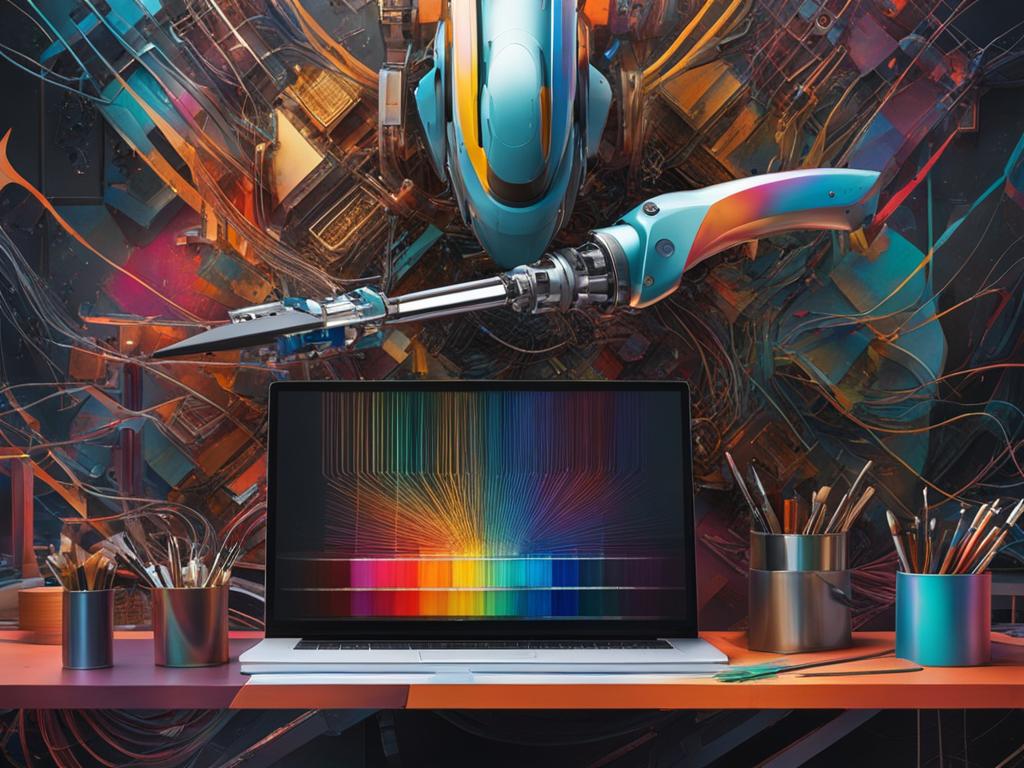
One of the most critical implications of AI-generated art is its effect on the concept of authorship and the role of the artist. An AI algorithm that generates a painting from a series of human-inspired data sets can be viewed as a collaboration between the artist and the machine. The degree to which the machine contributed to the creation of the artwork is a topic of ongoing debate within the art world.
Another potential implication of automated art creation using machine learning is its effect on the creative process and the future of art painting. By automating certain aspects of the artistic process, artists may be able to focus on other areas of their work, use AI as a tool in the creative process, or even challenge traditional artistic norms.
Key Artists in Machine Learning Art Painting
Machine learning techniques have revolutionized the art world, allowing artists to expand their creativity and explore new forms of expression. Here are some of the key artists who have embraced machine learning in their art practice:
| Artist | Notable Work | Machine Learning Technique Used |
|---|---|---|
| Obvious | Portrait of Edmond de Belamy | Generative Adversarial Networks (GANs) |
| Anna Ridler | Myriad (Tulips) | Neural networks |
| Mario Klingemann | Memories of Passersby I | Neural networks and other machine learning algorithms |
| Ross Goodwin | 1 the Road | Machine learning algorithms for language processing and image recognition |
These artists demonstrate the diverse ways in which machine learning can be used for artistic expression. Whether it’s through GANs, neural networks, or other machine learning algorithms, these artists are embracing technology to push the boundaries of traditional art forms and create new ones. Machine learning is undoubtedly changing the art world, and these key artists are at the forefront of this exciting movement.
Techniques in Machine Learning Art Painting
Machine learning art painting has revolutionized the way artists approach the creative process, providing innovative methods to augment their artistic capabilities. In this section, we will discuss some of the key techniques that artists use in machine learning art painting, including:
- Style transfer: This technique involves training a neural network to replicate the style of an input image and apply it to another image. By utilizing this technique, artists can create unique and dynamic paintings that blend multiple styles together. For example, see this stunning video of style transfer applied to various art styles.
- Generative adversarial networks (GANs): GANs involve two neural networks working together to generate new, unique images. One network generates fake images, while the other network tries to distinguish the fake from the real images. By working in tandem, they can create highly realistic and compelling art. See this paper for more information.
- Other cutting-edge methods: There are a variety of other techniques that artists can use in machine learning art painting, such as using recurrent neural networks to create dynamic animations or incorporating reinforcement learning to generate new art compositions. These methods are continuously evolving, and new techniques are emerging every day.
Overall, machine learning techniques for artistic expression have revolutionized the way artists approach the creative process, offering unparalleled opportunities to experiment and push the boundaries of artistic expression.
Future Trends in Machine Learning Art Painting
As machine learning continues to transform the art world, the future looks promising for artists and art enthusiasts alike. With new technologies and techniques emerging every day, it is clear that machine learning will continue to play a crucial role in art creation and curation for years to come.
One of the most significant trends we anticipate is the integration of machine learning into the creative process itself. As artists become more comfortable with AI algorithms and neural networks, we expect to see a greater reliance on these tools to generate unique ideas and explore new artistic expressions. This collaboration between human and machine is already leading to exciting breakthroughs in art painting, and we are excited to see where it will go next.
Another trend we anticipate is greater accessibility to machine learning tools and techniques. As the technology becomes more mainstream, we expect to see more artists embracing machine learning art painting and experimenting with new techniques. This democratization of art creation has the potential to disrupt traditional artistic hierarchies and allow for greater diversity and inclusivity within the art world.
However, as with any emerging technology, there are also potential pitfalls to consider. One of the biggest challenges facing the integration of machine learning in art painting is the question of ownership and authorship. Who owns the rights to AI-generated artwork? Is it the artist, the machine, or both? These are complex questions that will need to be addressed as the technology continues to evolve.
Ultimately, the future of machine learning in art painting is exciting and full of possibility. From new techniques and technologies to new forms of collaboration and artistic expression, we look forward to seeing how machine learning will shape the art world for years to come.
The Intersection of Technology and Creativity
Machine learning has sparked a new wave of creative expression by enabling artists to utilize algorithms and neural networks to generate art. However, this raises the question of how machine learning is transforming the art world and affecting the overall definition of art. As technology continues to evolve, is it possible that AI-generated art could surpass human-created art in terms of aesthetic appeal?
Some argue that AI-generated art lacks the emotional depth and meaning that human artists are able to convey through their work. Others believe that AI-generated art has its own unique style and voice that sets it apart from traditional human-created art.
Regardless of where one stands on the debate, it is clear that the intersection of technology and creativity is a subject of significant interest and ongoing discussion. The increasing use of machine learning in the art world is highlighting the need for a deeper understanding of the ways in which technology is shaping our understanding and appreciation of art.
The question remains: is machine learning art painting a tool for artists to enhance their creativity or a threat to the traditional forms of art? As we look to the future, it is important to consider how machine learning can be leveraged to complement and expand human creativity, rather than replace it.
Conclusion: Redefining Artistic Norms Through Machine Learning
I hope this article has shed light on the remarkable intersection of technology and creativity in the field of machine learning art painting. We have delved into how AI algorithms are redefining artistic creation and enhancing the creative process for artists.
Through the implementation of machine learning techniques for artistic expression, the art world has experienced a significant impact. The incorporation of machine learning has given rise to new techniques and styles that challenge traditional artistic norms.
As we’ve seen, AI painting algorithms and neural network art generation have empowered artists to produce novel works of art that blur the lines between traditional and modern art forms. Moreover, the application of machine learning in art creation has opened doors for automated art creation, which can help artists generate their ideas quickly.
Looking ahead, we can expect to see even more advances in machine learning art painting. The potential for greater integration of machine learning in art creation is vast, and our understanding of how to use machine learning techniques for artistic expression is growing by the day.
In conclusion, machine learning art painting represents a remarkable fusion of technology and creativity, opening up new possibilities for artistic expression and challenging established notions of what constitutes art. I believe the future of the art world is bright with the continued innovation and exploration of machine learning techniques for artistic expression.

